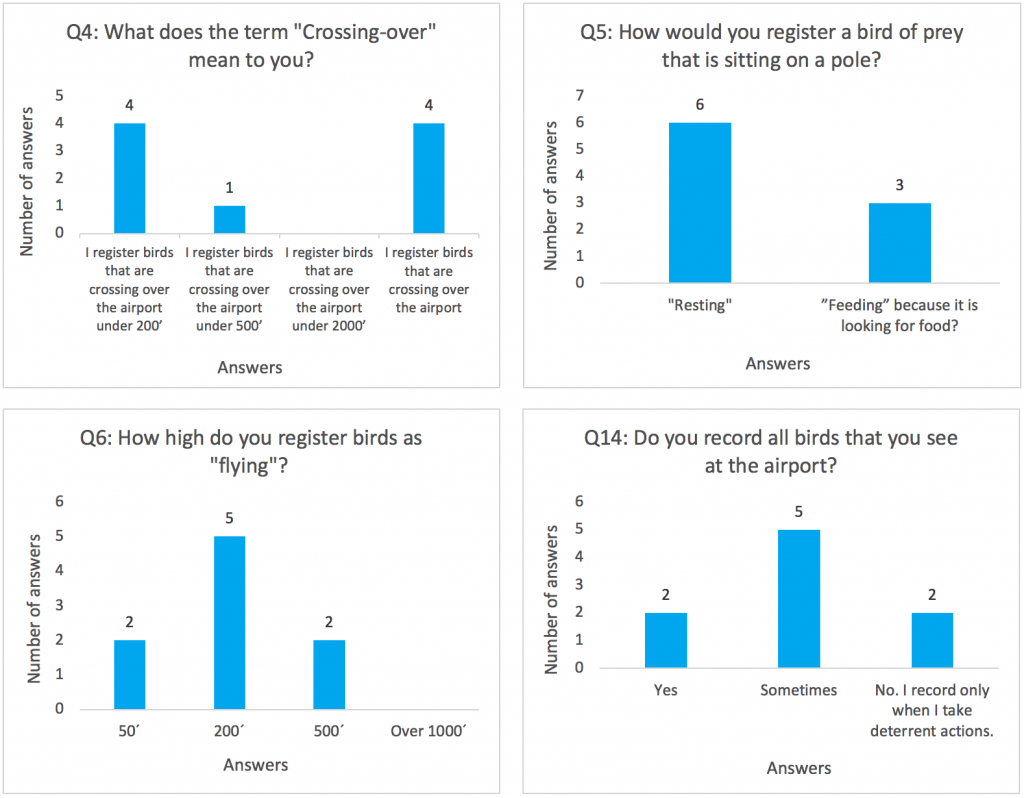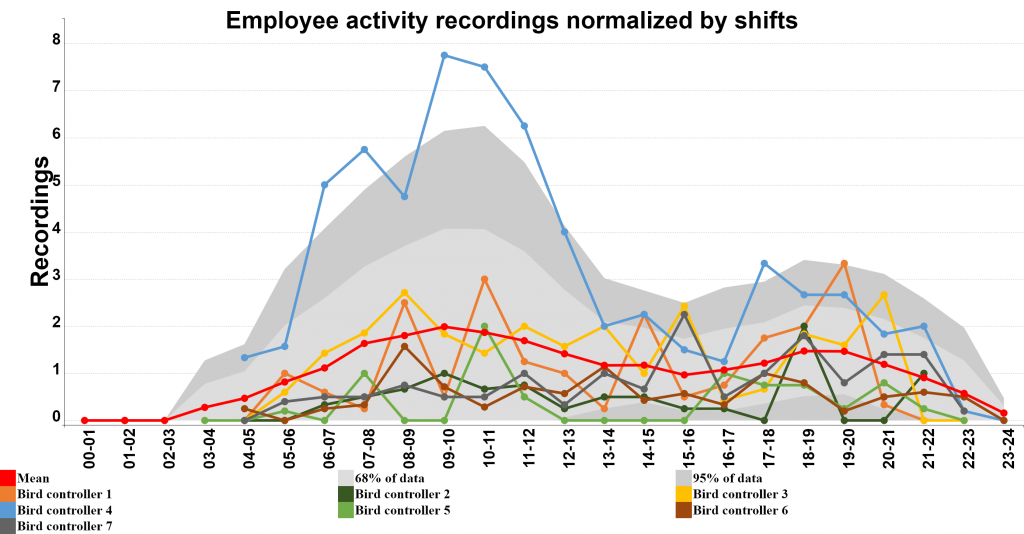Airport Managers, are you making decisions based on incorrect data?
| Company | AscendXYZ |
|---|---|
| Date | 31.01.2019 |
We make decisions based on facts and data, but what if the data we collected was flawed in the first place?
Airports around the world base their safety management systems on data and measurements. This constitutes the foundation of the decision-making process. Making the right decisions requires correct and valid data, whereas flawed data leads to more problems, or waste your energy and resources for nothing.
ICAO and other entities are setting forth standards for data capture in many areas, among others – data collected by airport bird control staff. These standards are important and valid guidelines that benefit aviation safety. One example is the International Birdstrike Committee (IBSC) standard 5, that confirms that “Airport bird/wildlife controllers should record the following at least every 30 minutes:
- areas of the airport patrolled,
- numbers, location and species of birds/wildlife seen,
- action taken to disperse birds/wildlife,
- results of the action.”
The data in this standard, is gathered by most airports globally, either as an ongoing bird control effort, or before every start and landing. When looking at the requirements above, it seems pretty straightforward. All airports we work with are collecting the data. However, the data is collected by many different people, and as it turns out, the understanding of the before mentioned bullet points differs. As a consequence, any analysis and a subsequent decision is potentially flawed.
In the following example we will look at the results of a “first step” standardization survey that we created. The survey was administrated at 4 of the airports using our digital Wildlife Registration service. You can view the survey here.
The results of the survey revealed significant inconsistencies in the data, already in the capture phase. This is not, in any case, a sign of airport staff not doing a good job – they surely did. The reason is, that the staff did not have the same understanding of how and what data should be collected. To illustrate you can see 4 answers out of 17 questions below. To see all answers from the survey – click links below the graphs.
To see the answers from all 4 airports press: Airport A, Airport B, Airport C or Airport D
In conclusion, the bird controllers are all collecting data in accordance with IBSC standards. However, they are collecting substantially different data. The Airport’s response to this new information was to immediately create an action plan with the following items:
- Education of bird controllers focusing on:
- Species recognition;
- Assessing the number of individuals in a flock;
- Standardised use of the Wildlife Registration solution, for:
- Crossing birds;
- Registration of birds crossing based on the altitude;
- If no birds are observed a “no activity” option is entered minimum every 30 minutes;
- Continuous performance monitoring:
- This will be done with “Data quality reports” (as described below);
- Bi-annual surveys to identify inconsistencies;
Data quality reports
While talking about data, can we spot inconsistencies by looking at how the data is collected? The quick answer is yes – it looks like it. The bird controllers are using our digital recording service, which means we are receiving the data in real-time, when the recordings are made.
We normalised the data by looking at the numbers of bird recordings, no activity recordings and bird controller movements (measured as device position in 25-meter intervals) in hourly intervals, divided by the number of shifts. A shift is defined as the number of different days when recordings have occurred in the given time interval. The average is calculated as a smoothed average by including the hour before and after to avoid spikes in the data.
Based on this it becomes evident, that there are inconsistencies in the number of recordings (graph 1) performed by the individual members of the bird control unit over a 30-day period. The data is divided into one-hour intervals over a 24H period. From this, we can see that bird controller 2 is making way more recordings than bird controller 6. We see similar tendencies in recordings of no activities as well as movements.
This information is consistent with the result of the survey.
Conclusion
Gathering data in accordance with IBSC standards is commendable, but it requires training and education. The training should be based on continuous performance monitoring. The airport should focus on developing bird control staff skills, based on the inconsistencies in the data. This can be done by surveying and analysing the way data is collected – as in the example above.
A standard for what to collect is not enough in itself. We need to describe and standardize how data is being recorded – not just write data in a protocol or capture it in a digital service. When seeking to gather actually valuable data, this is essential.
What is the bigger picture here? If we want to be able to compare data across airports, the standardization becomes even more important. This is a natural process as digital data capture and analysis is moving into the industry, we can enable management and staff to make well-founded decisions – if we focus on data quality. To support the data quality, analysis reports will be available to all our customers (see example here).
So, are you making the right decisions based on flawed data?



